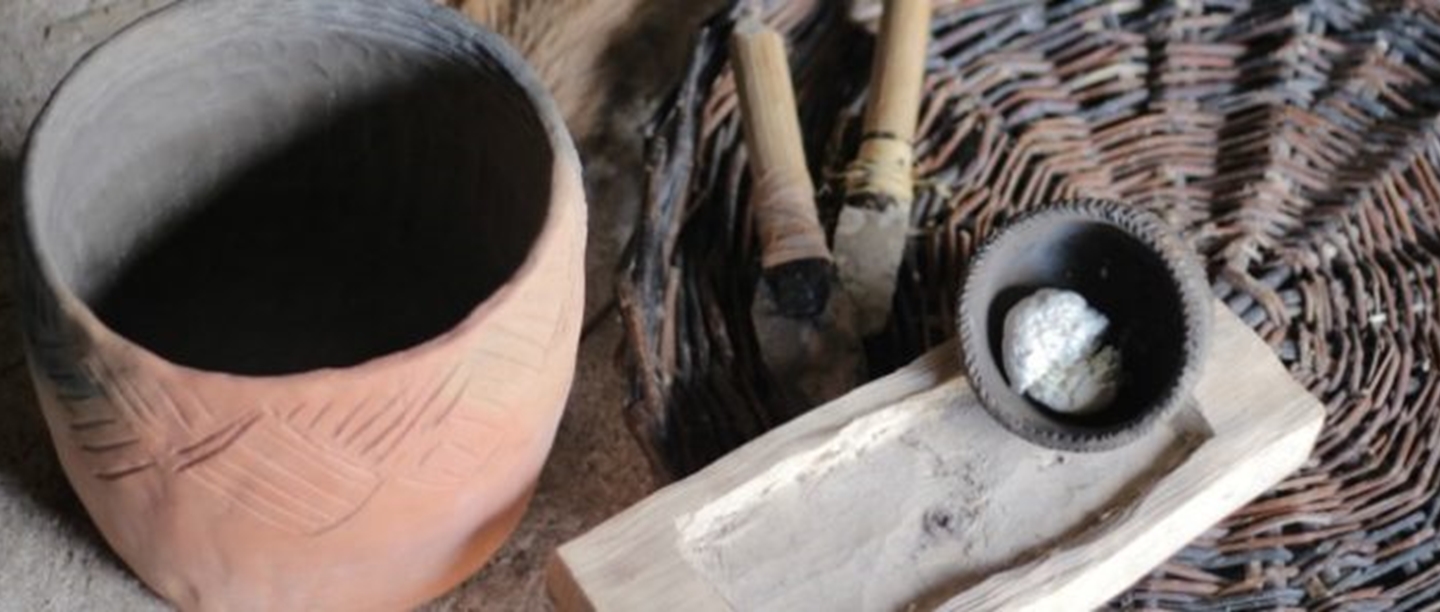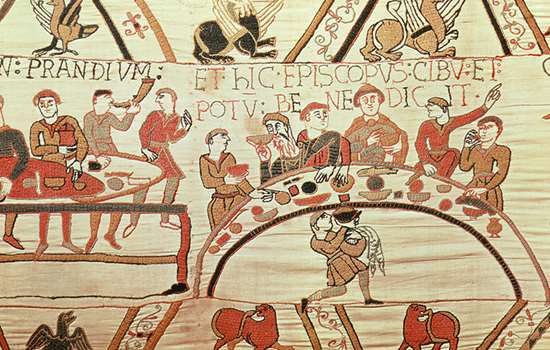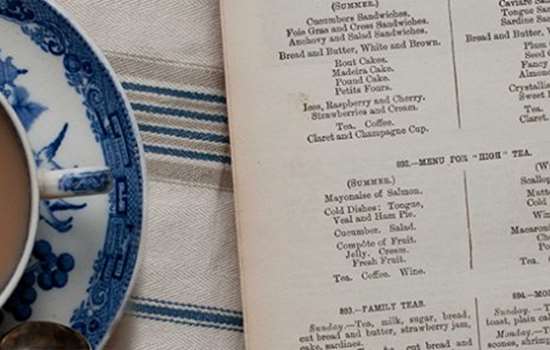
In 2017, British consumers spent £2.8 million buying cheese. By the end of this year, some 12 billion litres of milk will have been produced, according to information from the Agriculture and Horticulture Development Board.
It’s not surprising therefore that the vast majority of people in the UK consume some form of dairy products as part of their everyday diet. Yet, it is only relatively recently in human evolutionary terms that we started to consume milk and dairy products, such as cheese. The earliest evidence for the consumption of milk from animals dates to the start of farming, during the Neolithic period, which begins some 10,000 years ago in the Middle East. In Britain, we find milk fats preserved in pots from about 4000 BC, when farming arrived in the UK.
Discover what we know about the history of cheese in the Neolithic period.
Lactose intolerance isn’t a new phenomenon
If you are lactose intolerant, you are not alone. Today, about two-thirds of the world’s adult population cannot drink milk. Those who can drink milk in adulthood are concentrated in certain parts of the world, such as the Middle East, Southern India, West Africa, and Europe (and European populations in North America). In the UK, an estimated 85 per cent of adults have the ability to drink milk.
Volunteers at Stonehenge trying Neolithic cheese
All mammal milk contains a sugar called lactose, which adult humans cannot absorb in their digestive system. We need to produce an enzyme called lactase, in order to break lactose down to sugars that can be digested. If we don’t, the lactose ferments in the digestive tract, causing unpleasant symptoms from bloating and flatulence to diarrhea. Lactase helps breast milk to be digested, ensuring all the nutrients are absorbed. The ability to make the lactase enzyme is switched off as an infant is weaned onto an adult diet, and at least by seven or eight years of age. Adults with the ability to drink milk no longer have this ‘switch’, and continue to produce lactase. Mammals are born with the ability to produce lactase.
Some populations have therefore evolved the ability to consume milk past childhood over recent millennia. Worldwide there are several different versions of the gene (called an ‘allele’) which keeps adults producing lactase. In Europe, the allele (T-13910) has to date been found in the ancient DNA of Bronze Age populations (from c.2500 BC). No trace of the allele has been reliably found in Neolithic populations. This means that if Neolithic people wanted to consume dairy products, they needed to process it in such a way to remove the lactose.
Processing milk into cheese significantly reduces or removes the lactose sugars, making it edible for those who cannot tolerate lactose.
Making your own cheese at home is easy!
Was cheese a Neolithic treat?
There is good reason to think that milk and cheese may have been a special food in the Neolithic, rather than part of the everyday diet.
Not far from Stonehenge is a large monument, Durrington Walls. This monument is defined by a huge circular ditch and bank, in which two timber circles were constructed. Beneath the bank, a settlement was found which dates to a few decades earlier than the monument. This site was occupied in the late Neolithic (about 2500 BC), at the same time as the large sarsen stones were erected at Stonehenge. While there is limited evidence for food and feasting at Stonehenge, Durrington Walls offers the chance to investigate the diet and culinary repertoire of the Neolithic, and what the builders of Stonehenge might have eaten.
Cheese could have had a symbolic significance in the Neolithic
The animal bone assemblage from Durrington Walls, dominated by domestic pigs, indicates that large-scale feasting took place there. Pots, in a style named Grooved Ware, were also found in large quantities. Using a technique called lipid analysis, scientists led by Prof. Oliver Craig at the University of York, were able to identify the fats that had been cooked in the pots. As clay is porous, small amounts of fats are trapped and preserved in the clay matrix as the contents of the pot are heated. Once analysed, fats from ruminant and non-ruminant meats can be identified, as well as those from dairy products.
Grooved Ware pots from the Durrington Walls settlement and the southern timber circle had different lipid profiles. The Southern Circle was a public ceremonial monument, where feasting took place. While virtually no milk fats were found in pots from the settlement pits, those with evidence for the processing of dairy were found concentrated at the timber circle.
But why did milk play such a special role in the Neolithic? In many cultures around the world, milk is seen as a symbol of purity and nourishment through its association with breast milk and early childhood. As Neolithic adults would have been lactose intolerant, the knowledge required to transform milk into edible cheese and yogurt, or even the process of transformation itself, could have led to this food stuff taking on a symbolic significance.
Cheese making the Neolithic way
Cheese is made by adding an acidic agent to heated milk, which causes it to curdle. Citric acid or lemon juice are common agents used by home cheese makers, though it is likely that rennet (an enzyme found in the stomachs of ruminants such as cattle and used in industrial cheese production today) was available to Neolithic farmers. The ‘curdling’ separates the curds and whey, with the majority of the lactose remaining in the whey. The curd can then be consumed or processed further to make different sorts of cheese.
By transforming milk into other products, Neolithic people could gain the nutritional benefits from dairy. The earliest example of cheese making technology has been found at Neolithic sites in Poland from around 5000 BC. Clay ‘sieves’ (pots with many perforations) were analysed by Dr. Melanie Roffet-Salque (University of Bristol) and shown to have been used for processing dairy fats.
Make your own Neolithic cheese
You can try making your own Neolithic cheese at home, it’s easy!
You’ll need:
- A large saucepan
- Sieve/colander
- 2 litres of whole milk
- Something acidic: squeeze of lemon juice, capful of vinegar, 1 tsp rennet mixed with a little water.
What to do:
Heat the milk in a large saucepan to about 38°C (until the milk is warm, but not hot) and then turn off the heat.
Next add the lemon juice or rennet and stir the milk. Now leave the saucepan for about half an hour or a little bit longer. Over this period the milk will become more solid. If it doesn’t, add more of the acid.
Using a long knife, cut the solidified milk into about 1 inch squares. This will separate the solidified milk into curds (the solid bit) and whey (the liquid bit).
Once the milk has separated, carefully spoon the curds into your colander or sieve and leave for a couple of hours. The colander needs to be placed over another pot or pan for the whey to drip into. Putting something heavy on top of the curds helps to speed up the process and to make a firmer cheese. After 2–3 hours there should no longer be whey dripping out of the colander and you have Neolithic cheese!
Neolithic people probably added things to their cheese just like we do, so we suggest you add some salt, herbs, or maybe even wrap it in some wild garlic leaves. It should keep for about 48 hours in the fridge.
Watch our stream Stonehenge Feast live
Ever wanted to know what the people who built and used Stonehenge were eating? Join us from Stonehenge as we travel back around 5,000 years into the Neolithic era with Chris Hobbs from History Bombs.
We shed light on the diet and lifestyles of our ancestors by drawing on recent archaeological discoveries and ground breaking science.
Find out more on our website about Neolithic food and feasting at Stonehenge.


